Many of you will have heard of Haploid or Diploid cells or even whole organisms Haploid (N) or Diploid (2N), but in practice what are the differences? What is meant by “Ploidy“of some kind?
The Genes are nothing but “fragments“of DNA which, fused together, form the Chromosomes.
Let’s start with our species; L’Homo sapiens is a Diploid organism which has 46 chromosomes, however there are 23 pairs of chromosomes, that is, we have a pair for each “guy“of chromosome. (Although the twenty-third pair is composed of sexual chromosomes which, in the case of males, are different and are referred to as X chromosome and Y chromosome, but do not dwell on this detail which is irrelevant to understand the concept of”Haploid-Diploid“). The set of all chromosomes of a species is said Karyotype.
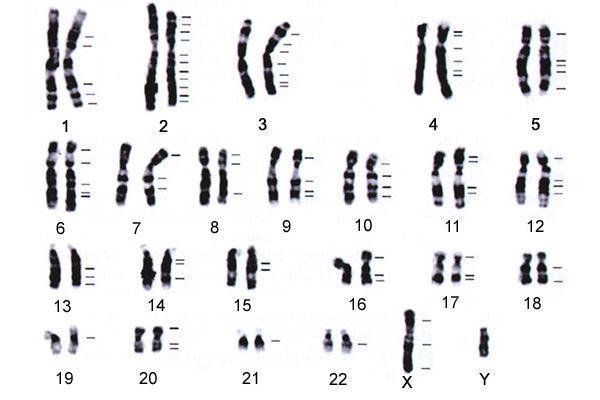
Let’s suppose that Chromosome 1 contains the Gene “Eyes colour“and the Gene”Hair colour“(in reality there are hundreds of genes on each chromosome). Each of us will have two Chromosomes 1 and, consequently, 2 Genes”Eyes Color“and 2”Hair Color Genes“The same thing could also be thought for the remaining chromosomes.
Alleles are variants of the same Gene if we take an entire population and analyze the “Eye Color Gene“, present on Chromosome 1, we would notice that there are more alleles, for example:
- Eye Color Gene “Blue“
- Eye Color Gene “greens“
- Eye Color Gene “Brown“
- Eye Color Gene “Blacks“
Example:
Individual 1Homozygous, both alleles “Blue eyes“, will have Blue eyes
Individual 2Homozygous, both alleles “Brown eyes“, will have Brown eyes
Possessing alleles form in Genotype while the outward appearance of a character is called Phenotype. In the example above, individual 2 and 3 have the same phenotype (“Brown eyes“), despite having a different genotype.
In many genes there are no more alleles, but there is only one. In this case, all men are homozygous for that gene and contain two identical copies.
The same goes for ALL Diploid organisms, a Diploid Plant will have 2 pairs of each of its genes.
But what is the advantage of being Diploid?
First, having a pair of each gene could allow survival, even if one of the two were mutated or not functioning. Secondly, as I will explain shortly, this allows for one greater genetic variabilitythanks to sexual reproduction.
Let’s take a diploid plant, all its cells will contain 2N chromosomes, where N is the number of “pairs“of Chromosomes and varies from species to species. For example the Apricot Tree has 8 pairs of Chromosomes and, in total, each of its cells has 2 x 8 = 16 Chromosomes.
We could say that the chromosomal set “Haploid“of the Apricot tree is N = 8, or that its chromosomal running”Diploid“is 2N = 16, while the Birch has 2N = 28 or N = 14 etc ..
So are all the cells of the Apricot tree diploid?
Almost all, but not all. The cells that give rise to the male sex cells (Pollen) and the female sex cells (Ovules) undergo a process known as Meiosisthrough which a cell “diploid“turns into a cell”haploid“, halving the number of your chromosomes.
All sex cells are haploid, i.e. each pollen grain and each egg cell of the flower contain only 1 chromosome of each pair of chromosomes.
Let’s take a practical example:
all the cells that make up the leaves, branches, fruits and roots of our diploid plant (in the example the Apricot tree) will contain 2N chromosomes. Below are indicated the 8 pairs of chromosomes (with numbers from 1 to 8), while the two chromosomes of each pair are indicated with the letter A, or B. All diploid cells of the same plant have exactly the same chromosomes.
1A-1B
2A-2B
3A-3B
4A-4B
5A-5B
6A-6B
7A-7B
8A-8B
The sex cells (Pollen and Eggs) will have only one of the two chromosomes 1 (or 1A or 1B), only one of the two chromosomes 2 (or 2A or 2B) and so on. Given that taking A or B is a random occurrence, one senses that practically each sex cell will have a different assortment of chromosomes.
For example, a pollen grain could have the following chromosomes:
1B
2A
3B
4B
5B
6A
7A
8B
While another might have:
1A
2A
3B
4A
5B
6B
7B
8A
During the pollination, a pollen cell (Haploid) fertilizes an egg (Haploid). This fusion restores Diploidy (N + N = 2N), allowing the development of a new plant. The fact that each pollen cell (and each egg) is not identical to the other means that each seed is a little different from another, generating a plant a little different from another, although the mother plant is the same.
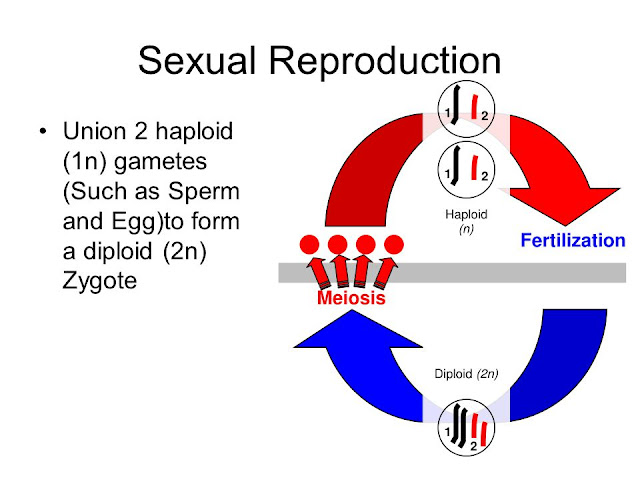
In higher plants, as well as in man, the whole organism is Diploid and the sex cells (Haploids) could not live autonomous life. But some plants, such as algae and Fern can develop and grow, alternating a haploid phase (gametophyte), with a diploid (sporophyte), in a mechanism known as Aplodiplonte cycle
Other plants, on the other hand, are even polyploids; for example Bananas, which produce the bananas we all eat, are triploids (3N) and sterile. Each of their chromosomes is present in triplicate.
Bacteria, Protozoa, but also other organisms exist only in the Haploid (N) form.
In multicellular animals there are special cases, such as that of the Bee (Apis mellifera).
The Queen Bee is diploid (2N), while its eggs are haploid (N). These eggs may or may not be fertilized but, in both cases, they will give rise to a new bee. If they are not fertilized they remain haploid and originate the male Ape (Fuco), if instead they are fertilized the female Ape develops, which is Diploid. Thus, in this species, the sex of the Bee is determined by ploidy. Drone (N) and Female Bee (2N).
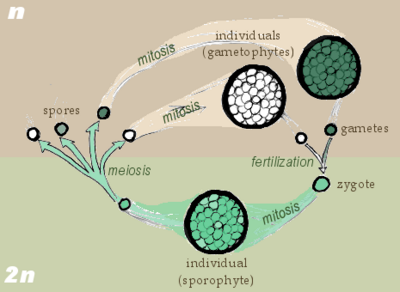

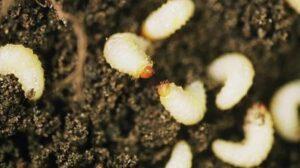
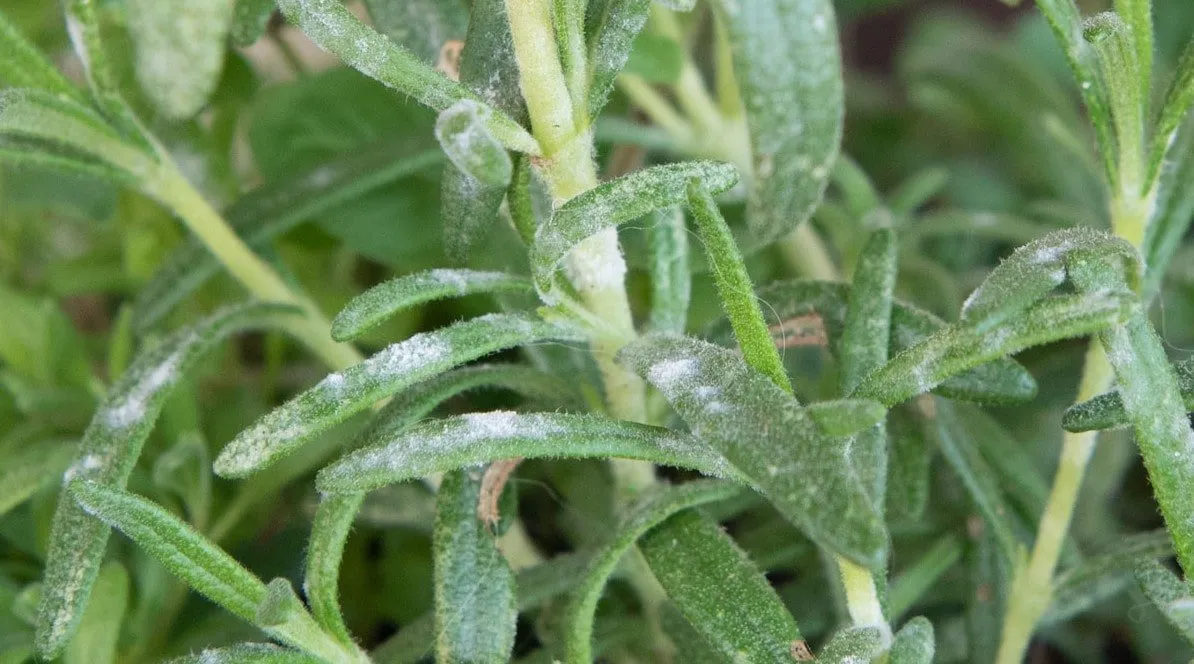
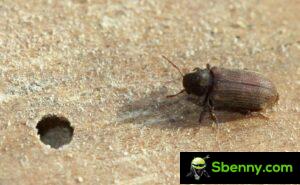
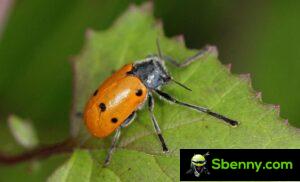

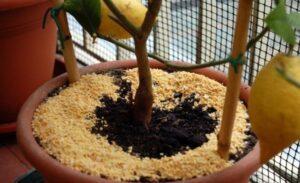
Start a new Thread